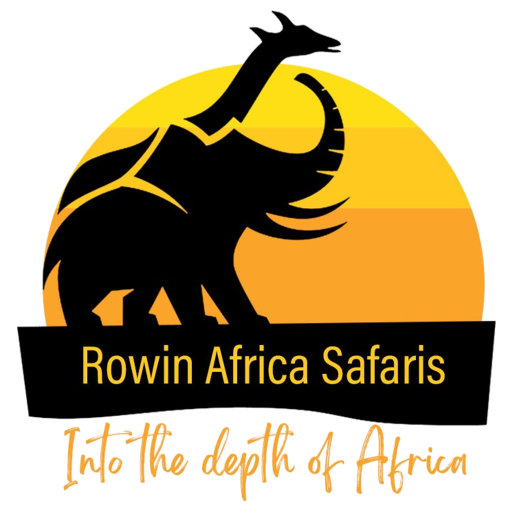The Serengeti is a True Birder’s Paradise: Bird Checklist to Look Out For: While Serengeti National Park is known to host the largest land animal migration in the world – The Great Wildebeest Migration, this expansive landscape is also a great ornithological destination. The Serengeti is home to hundreds of unique birds and the best part is that bird watching activities are available throughout the year.
September – April are the best times to visit Serengeti for avid birders, as a birder get your binoculars and nature camera ready.
As you plan to go to Serengeti for birding, here are a few species to lookout for in this fantastic birder’s paradise.
Ostriches: Struthionidae
An Ostrich is the largest bird in the world, they are usually black in color and they hatches from a football – sized egg. Ostriches are flightless birds, resident of the open savannah and are common in the southern and northern Serengeti Plains.
Ducks: Anatidae
Duck is the most common name used for numerous waterfall family Anatidae species which also includes swans and geese, they are divided among several subfamilies in the family Anatidae.
Common ducks found in the Serengeti include white-faced whistling-duck, fulvous whistling-duck, Egyptian goose, knob-billed duck, spur-winged duck, Cape teal, Hottentot teal, Eurasian wigeon, African pygmy-goose, red-billed duck, yellow-billed duck, northern pintail, southern pochard and Maccoa Duck.
Guinea Fowl: Numididae
This panicky white – speckled grey bird with a blue head and ivory casque, the helmeted guinea fowl can be found in Serengeti National Park, this bird is similar to creasted guinea fowl with blackhead feathers which is also a localized resident.
Pheasants, Grouse, and Allies: Phasianidae
Francolins are the African equivalent of chickens and pheasants and dozens of this plump game bird species have been recorded in Serengeti National Park, recorded species include the Harlequin quail, scaly francolin, Hildebrandt’s francolin, yellow-necked francolin, gray-breasted francolin, crested francolin, coqui francolin, red-winged francolin, and Shelley’s francolin.
Flamingos: Phoenicopteridae
This type of wading bird belongs to the Pheonicopteridae family, flamingoes are ranked amongst East Africa’s most popular avian attraction. They are commonly found in the Southern Serengeti Plains, Ndutu Area, Northern Serengeti and the Serengeti Grumeti Area.
Grebe: Podicipedidae
Grebes are closely related to the loon and they belong to the family of swimming and diving birds, but different from other waterfowl such as swans, geese, duck and loons. These grebes are more able to swim in water than they walk on land and they use their wings to propel themselves underwater in order to get their food.
The little grebe, great crested grebe and the eared grebe can be found in Serengeti National Park.
Pigeons and Doves: Columbidae
Stout-bodied birds with short necks and short slender bills, the Columbidae is a bird family that constitutes the doves and pigeons. They feed on seed, fruits and plants. The doves rank among the definitive sounds of the African bush, the rock pigeon, speckled pigeon, dusky turtle-dove, laughing dove, emerald-spotted wood-dove, tambourine dove, Namaqua Dove, and African green-pigeon can be found and spotted in Serengeti National Park.
Stout-bodied birds with short necks and short slender bills, the Columbidae is a
Kori Bustard: Otididae
The beautiful Kori Bustard is the world’s heaviest flying bird with brown wings, prominent backward crest, speckled white belly and a ponderous gait.
Sandgrouse: Pteroclidae
The Sandgrouse is one of the 16 species of birds of African or Asian deserts, they have grey or brown plumage, pointed wings, short legs and a pin-like central trail feather. These birds are known to fly swiftly and walk rapidly, the Chestnut-bellied sandgrouse, yellow-throated sandgrouse, and the black-faced sandgrouse are found and can be spotted in Serengeti National Park, commonly in the Southern Serengeti Plain, Ndutu Area, Northern Serengeti and the Grumeti Region.
Cuckoos: Cuculidae
The Cuckoos are highly vocal birds but equally ventriloquial, and most of them are unlikely to be seen unless actively sought. The Cuckoos are also among the most familiar sounds of the African bush. Cuckoos species found in Serengeti National Park include red-chested cuckoo, black cuckoo, common cuckoo, African cuckoo, black coucal, white-browed cuckoo, pied cuckoo, levaillant’s cuckoo, great spotted cuckoo, Klay’s cuckoo, African emerald cuckoo, and the Diderick cuckoo and are common in the Southern Serengeti Plains, Ndutu Area and northern Serengeti areas.
Storks: Ciconiidae
There are eight stork species in Tanzania including the three Migrants, notably the Eurasian variety. A handsome pied giant with a red and yellow bill called the saddle-billed stork is a stronghold in Serengeti, the African openbill, black stork, Abdim’s stork, woolly-necked stork, white stork, marabou stork, and the yellow-billed stork can be found in Serengeti National Park commonly in the southern Serengeti plains, Ndutu area, northern Serengeti and the Grumeti Area.
If you are looking for a Serengeti safari package that will enable you catch a glimpse of what this birder’s paradise has to offer, let us help plan the perfect safari package for you.
